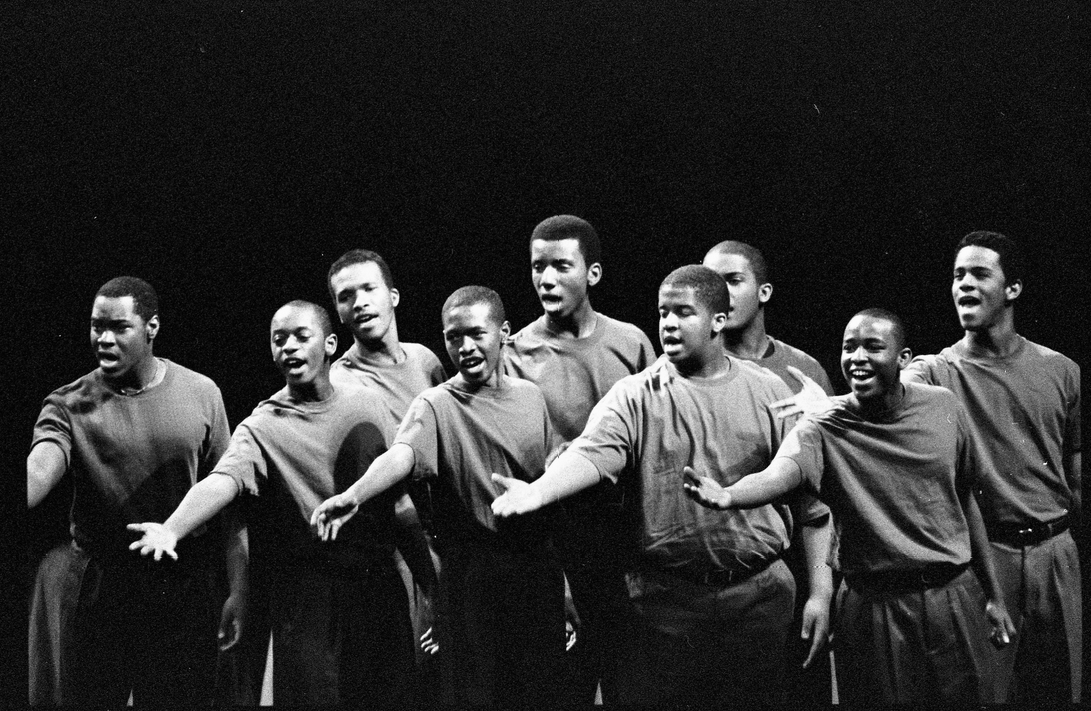
President Alan G. Merten.
This post was written by Lana Mason, Processing Student Assistant. Lana has an Associate of Arts degree in Fine Arts from Piedmont Virginia Community College. She is currently studying Art History at George Mason University. Lana was the recipient of the University Libraries Student Assistant Scholarship for the 2018-19 academic year.
This is the fifth post in a six-part blog series exploring the campus culture of George Mason University through the lens of each of its six past presidents’ tenures. The materials referenced in these posts are mainly derived from the George Mason University Office of the President records.
When George W. Johnson retired from George Mason University (GMU) in 1996, he was succeeded by Alan G. Merten, who brought to the position a strong sense of vision for the up-and-coming university. Merten, who grew up in Milwaukee, Wisconsin, came from a technology-focused academic background and held a decade’s knowledge of and experience in academic administration. He was armed with a Ph.D. in Computer Science from University of Wisconsin–Madison, and had worked for years as a professor, specializing in the applications of Computer Science within business. He had then served as dean of the School of Business at the University of Florida, and finally as dean of the Johnson Graduate School of Management at Cornell University before arriving at GMU. It was at Mason that Merten’s skills and interests, owed to his unique background, became powerful tools for his administration to both refine and elevate the university.
C-SPAN. “The Communicators: Alan Merten.” Youtube, August 23, 2009, https://www.youtube.com/watch?v=PWNiWYJrfbk
Under Merten, though his approaches somewhat differed from his predecessors, the university continued to grow in population, size, and prestige. Merten’s experience with business and technology proved to be an excellent fit for the technology and innovation-focused university. His administrative efforts sought to continue Johnson’s in promoting GMU as a hub of technological, business, and scientific advancements. This resulted in the continued development of the main campus in Fairfax, Virginia, as well as expansion into neighboring counties. Many of the iconic buildings found on the Fairfax Campus today, such as the Long and Kimmy Nguyen Engineering Building, were constructed during Merten’s tenure. The Science and Technology Campus in Prince William County and the Arlington Campus also expanded. This campus development helped the university to accommodate the increasing student body and provide facilities for a variety of innovative academic and research opportunities.

“Black history concert 50,” February 1, 2001, Broadside photograph collection, R0135, box 28, page 82, frame 14, Special Collections Research Center, George Mason University Libraries.

“[Untitled] women’s coalition take back the night walk 61,” 2000, Broadside photograph collection, R0135, box 28, page 72, frame 23, Special Collections Research Center, George Mason University Libraries.
Students at GMU also continued to develop campus culture through events, the performing arts, clubs, festivals, and other activities. Examples of such activities are a Black History Concert held during Black History Month in 2001, and the Take Back the Night walk in 2000, in which a cross section of student groups and individuals came together to rally against sexual, relationship, and domestic violence (the event continues to take place annually).
George Mason University Student Media. “’ 8 Years Past Midnight’ (George Mason University Final Four Documentary),” Youtube, January 27, 2015, https://www.youtube.com/watch?v=4CgKXghsM0Q
One of the most memorable highlights for many of Merten’s time at GMU occurred during the spring of 2006, when the university’s men’s basketball team reached the Final Four in the NCAA Division I Men’s Basketball Tournament. Although GMU was eliminated from the tournament in its Final Four match against the University of Florida, the achievement was met with incredible enthusiasm from the student body, administrators, and fans beyond the university alike. Reaching such an advanced position in the tournament helped to bring nationwide attention to GMU and its community, a boon for what was, as then-head coach Jim Larrañaga put it, an “unknown” school at the national level.[ii] Reflected in thriving campus culture, sports achievements, and academic development, Merten’s time at GMU was one of tremendous growth and success. As president, Merten fostered a commitment to excellence that honored his predecessors’ vision while also adapting to a contemporary ethos. After 16 years of service, Merten retired in June 2012. He was succeeded by Ángel Cabrera. [i] https://agmerten.wordpress.com/ [ii] https://www.ncaa.com/news/basketball-men/article/2016-03-26/march-madness-its-been-10-years-george-masons-final-four-run
Follow Special Collections Research Center on Social Media at our Facebook, Instagram, and Twitter accounts. To search the collections held at Special Collections Research Center, go to our website and browse the finding aids by subject or title. You may also e-mail us at speccoll@gmu.edu or call 703-993-2220 if you would like to schedule an appointment, request materials, or if you have questions. Appointments are not necessary to request and view collections.

